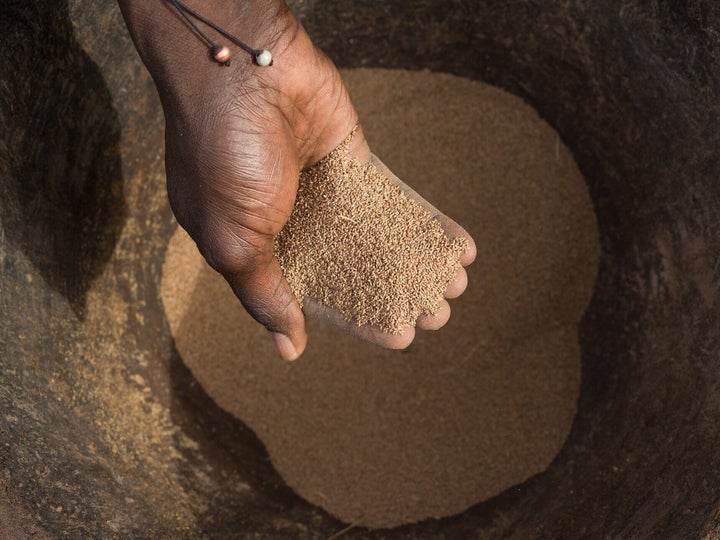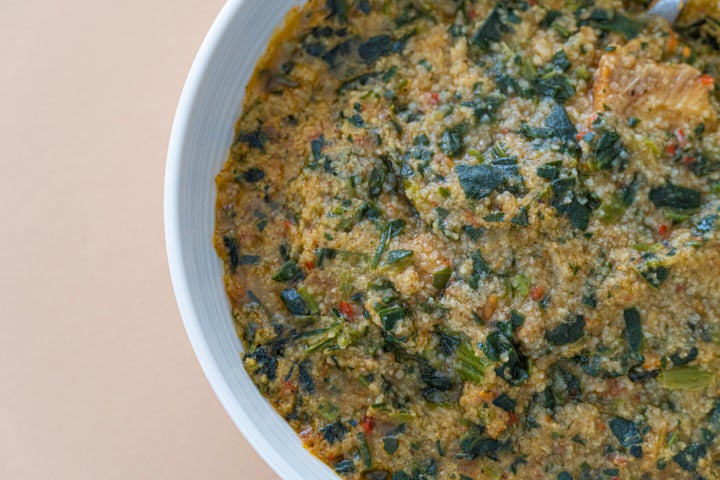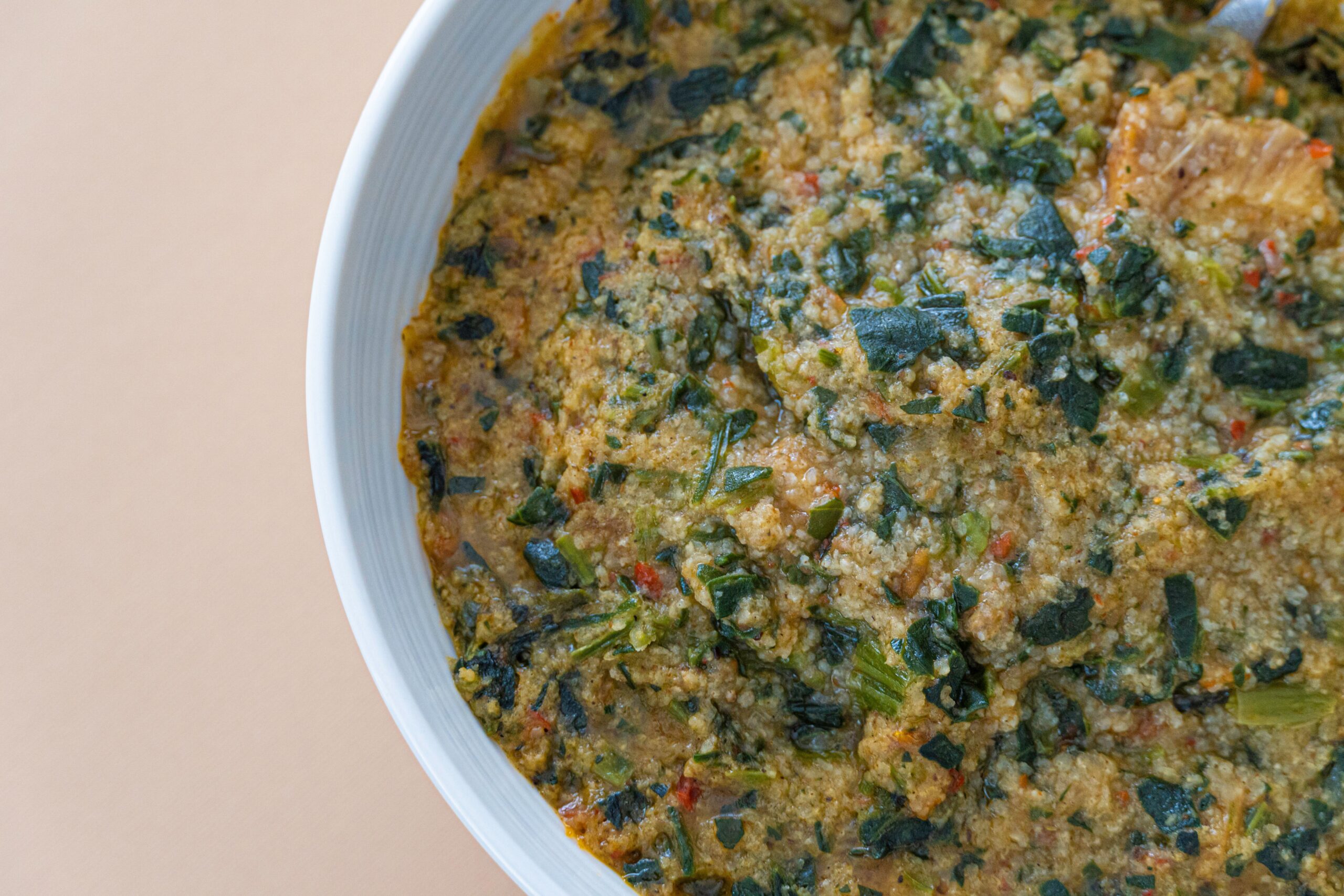Fonio: Try This Nutrient-Packed Ancient Grain When You’re Over Quinoa
Ancient grains, which are described by the advocacy group Whole Grains Council as those that have been largely unchanged over the last several hundred years, have become quite the contemporary commodity. Over the past decade, grains like buckwheat, spelt, millet and, of course, the ever-present quinoa have become starchy staples on wellness-minded restaurant menus as well as many personal grocery lists.
Given the many nourishing qualities attributed to ancient grains, it’s ironic that the grain packing the most powerful punch when it comes to health benefits happens to be the smallest in actual size and the newest available on the U.S. market ― fonio.

Fonio is good for your health.
Ancient grains, in general, are coveted for their nutritional value. Much more beneficial to the body than some of the most widely used varieties of rice, corn and wheat ― which have undergone centuries of breeding ― ancient grains offer an abundance of advantageous vitamins and nutrients.
DJ Blatner, a Chicago-based registered dietitian, nutritionist and winning trainer on the 2016 ABC competition series “My Diet Is Better Than Yours,” recommends adding ancient grains to your diet for their “stress-fighting B vitamins, magnesium for muscle health, blood-building iron, and fiber for regularity and gut health.” She advises that “ancient grains can help feed good bacteria in our gut and healthier gut bacteria can help with everything from digestion to immunity to mood.” Ancient grains are also known to be relatively high in protein, which is beneficial for anyone on a plant-based diet.
But fonio, specifically, goes above and beyond most ancient grains in many nutritional categories.
Native to West Africa and considered “the seed of the universe” by ancient Egyptians, fonio has been grown in that region for over 5,000 years and is likely Africa’s oldest cultivated grain. This tiny member of the millet family is much more nutritious than its larger kin ― and most other grains, for that matter. It’s a great source of complex carbohydrates. Fonio is also a gluten-free grain with a low glycemic index, making it ideal for gluten-sensitive eaters and those who monitor their blood sugar.

Fonio also fares much better than its fellow grains in calorie count. According to the U.S. Department of Agriculture, 1 cup of cooked fonio has 140 calories vs. 216 calories per cup of brown rice, 300 calories per cup of wheat pasta and 222 calories per cup of quinoa. Fonio is also high in the amino acids methionine and cysteine, both of which promote healthy hair, skin and nail growth but are not present in any other grain.
It’s good for the planet, too.
As beneficial to the body as fonio is, how it’s grown helps the environment as well. Fonio is generally a product of climate-smart agriculture ― that is, farming practices that sustainably increase productivity while reducing greenhouse gases.
Pierre Thiam, co-founder and president of Yolélé Foods (a Brooklyn, New York-based fonio brand available at Whole Foods and Thrive Market), explained that fonio seeds are typically broadcast in soil, meaning they’re scattered by hand over soil that has been lightly prepared. Growing the grain requires no deep plowing, which is harmful to the soil.
The resilient little seeds also tolerate a wide variety of soil types, varying rainfall levels and assorted elevations. Fonio is part of a traditional crop rotation in countries like Guinea, Nigeria, Cameroon and Senegal, which are among the largest producers of the grain.
Thiam, who is a New York-based chef, seeks not only to return fonio “to its original glory that had been stifled by colonization,” but also to ensure that the regions that produce it, like his native Senegal, benefit long term from the grain’s global expansion.
Like quinoa, fonio has the potential to be a huge economic boon for the small farms that grow it. But Thiam cautioned, “We are hoping to avoid quinoa’s disruptive boom and bust cycle, which posed problems for growing communities.” He said his company contracts with farmers to buy their crops at “attractive” prices while also working with them “to help them increase their productivity and thus their profits.”
What it tastes like and how to eat it.
If fonio’s nutritional benefits, environmental advantages and potential to financially assist the economy of African nations isn’t enough of a draw, the grain’s taste and texture, coupled with its foolproof and speedy preparation, should definitely seal the deal.
Thiam described fonio as “light and fluffy” with “a slightly nutty, earthy flavor.” He said that it “soaks up spices and sauces beautifully” and that it can “replace any grain in your favorite recipes … you can even use it in baked goods.”
The recipe below should give you perfectly cooked fonio in approximately 6 minutes. However, all is not lost if for some reason it doesn’t go to plan. Thiam said it’s a very forgiving grain: “Fonio never embarrasses the cook!”
His advice: “If it comes out too soggy, leave it on the heat for a little bit longer to cook off the liquid. If it’s dry, add a spoonful of water, cover, and cook for one minute.”
How to cook fonio.
In a pot with a lid, coat 1/2 cup fonio with 1 tablespoon oil. Turn heat to high, add 3/4 cup water (or low-sodium vegetable stock for savory dishes) and bring to a boil.
Add a pinch of salt, stir, cover and turn heat to low for 1 minute.
Turn off heat and let sit covered 5 minutes. Fluff with a fork. Serve hot or cold.
Easy enough!
Published at Wed, 02 Sep 2020 09:45:11 +0000

